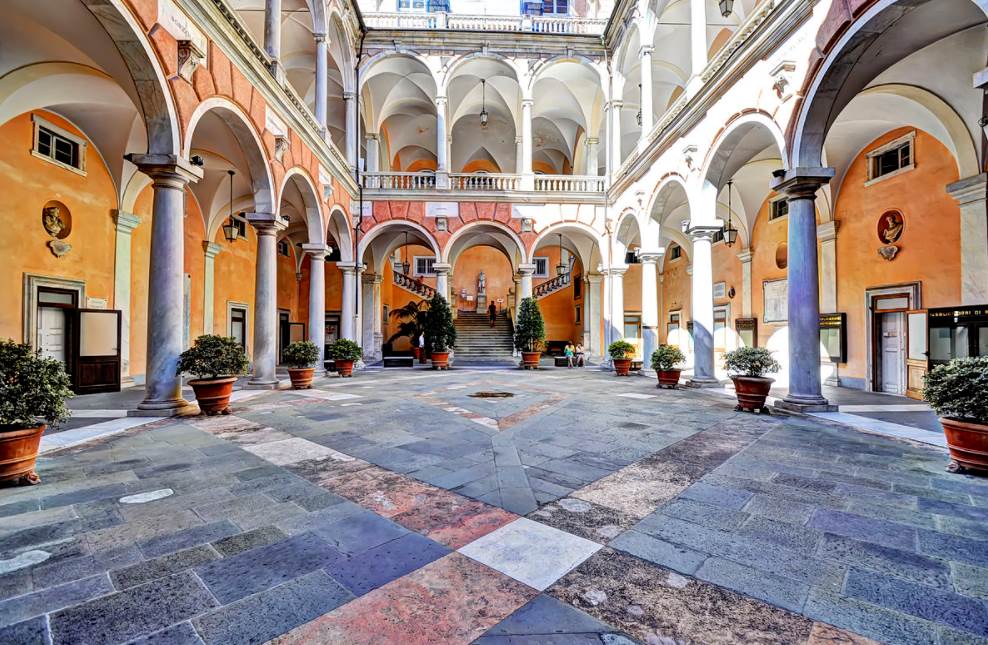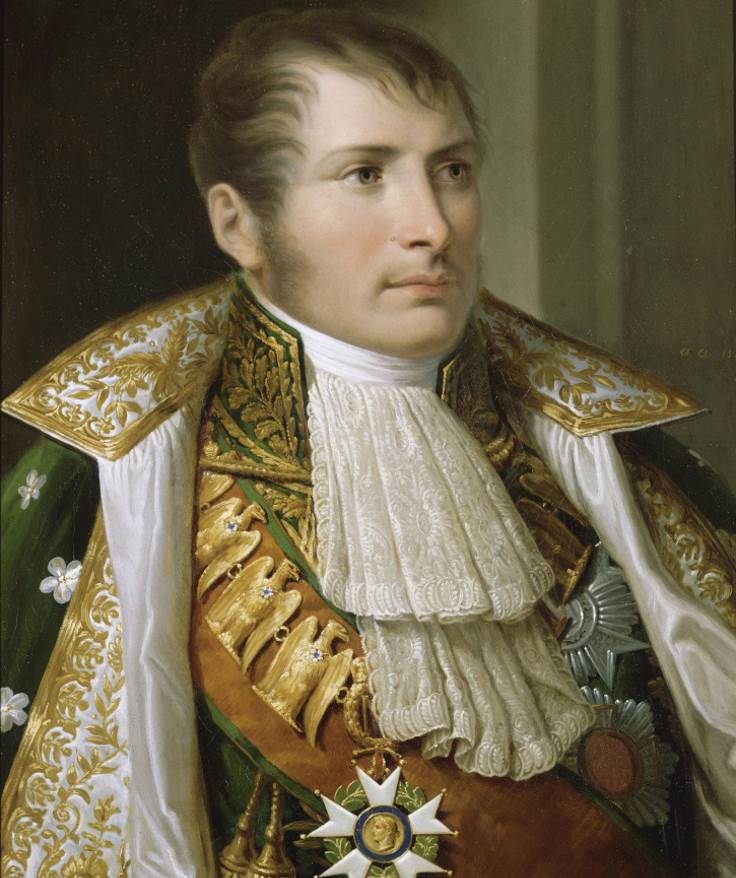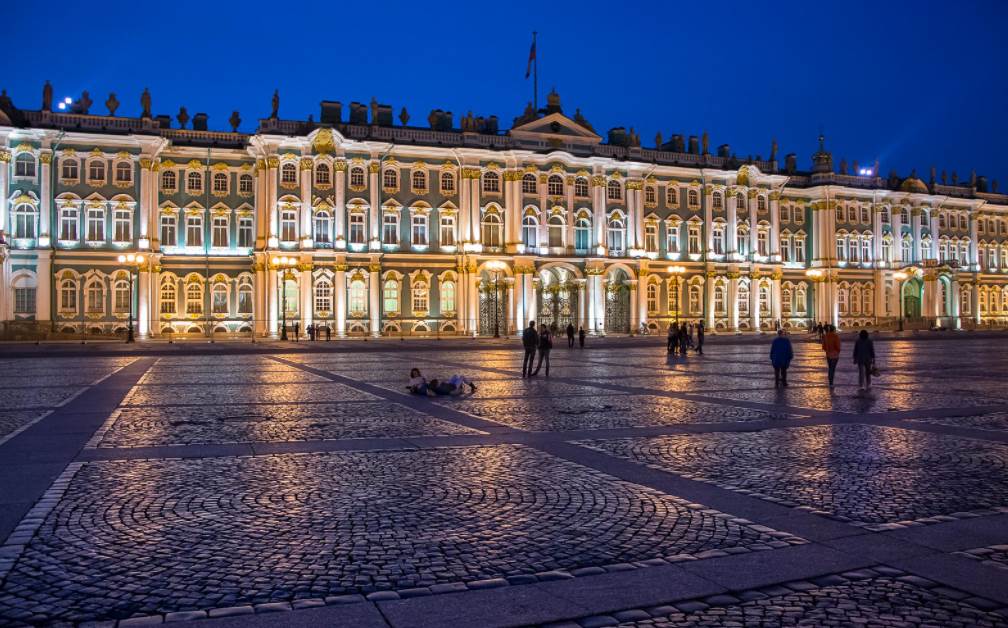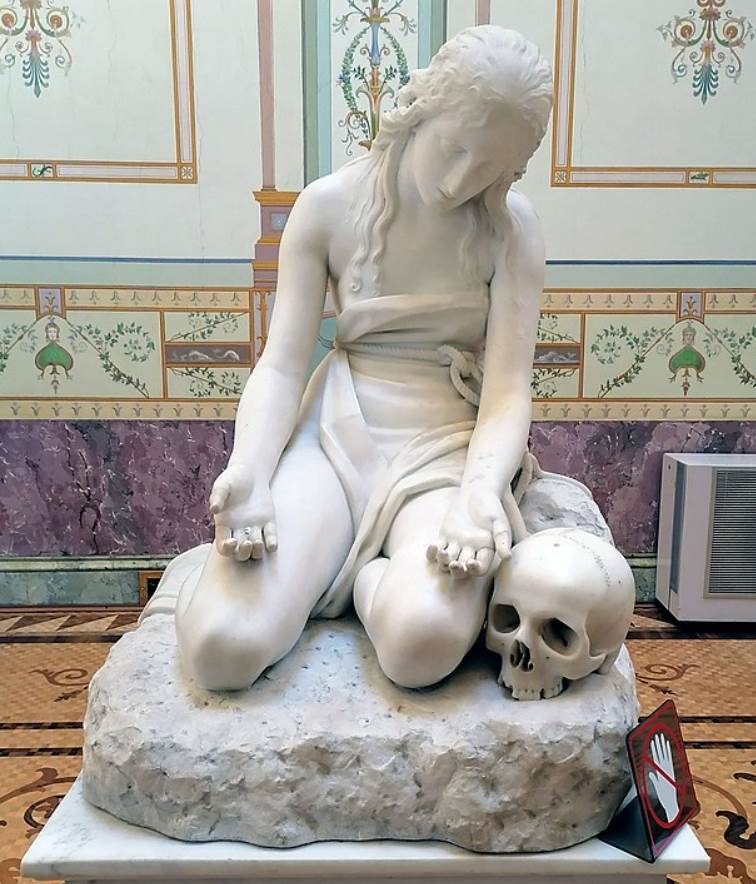By the time that Antonio Canova (1757-1822) moved to Rome in 1780, he was already an established artist in the city of Venice. This major city in northeastern Italy was not too far away from his hometown of Possagno in the Venetian Republic.
In this article, we’ll take a closer look at some of the most interesting facts about Penitent Magdalene by Antonio Canova, the title of 2 similar Canova sculptures.
1. The first version was produced during the 1790s
Antonio Canova didn’t have too many problems acquiring commissions in Rome after arriving in the city and the 1790s ended up becoming the most productive years of his career.
He was lucky to be able to quickly produce Theseus and the Minotaur (1781-1782), a commission from the Venetian Ambassador in Rome. He closely studied the works of Michelangelo and grew to become the most sought-after artist in the city at the end of the 18th century.
It’s during this period that the Neoclassical artist produced the original version of Penitent Magdalene, a remarkable sculpture that he completed between 1793 and 1796.

2. It depicts a popular figure in the world of art
The story of the perceived sinful woman named Mary Magdalene has been a very popular one in the world of art and she has been depicted by various sculptors and painters. Some artists who depicted this woman were Donatello, El Greco, and Caravaggio, to name just a few.
Canova produced multiple preparatory sketches before he eventually settled on a sculpture that depicts Mary Magdalene as she is kneeling.
The exact role of Mary Magdalene, who was referred to as one of the most prominent followers of Jesus Christ and who witnessed both the Crucifixion and Entombment of Jesus Christ, remains obscure.
That’s especially because she was confused with a woman named Mary of Bethany since the Middle Ages. She was also portrayed as a prostitute since the 6th century and as the unidentified “sinful woman” who anointed the feet of Jesus while at the house of Simon the Pharisee.
This scene can be admired in “The Feast in the House of Simon,” one of the great Veronese paintings depicting a lavish banquet scene.

3. The sculpture was praised over a decade after it was completed
After completing two magnificent funerary monuments for Pope Clement XIV and Pope Clement XIII, Canova’s reputation in Rome even exceeded that of while he was the preeminent artist in Venice.
He also started getting commissions for sculpture outside of Italy during this period, including the tomb of Maria Christina, Duchess of Teschen (1742-1798) in the Augustinerkirche of the Hofburg Palace in Vienna, Austria.
These monumental works of art didn’t allow art critics to appreciate Canova’s Penitent Magdalene for the masterpiece it is at the time.
It wasn’t until it was displayed at the Paris Salon of 1808, the first time it was on public display, that it received the credit it deserved. This was a period in which Canova was already one of the leading artists in Europe, receiving commissions from the highest levels in France and England.

4. The first version moved quite a bit before arriving at its current location
The sculpture was acquired by a French art collector following its display at the Paris Salon of 1808 and was subsequently sold to an Italian politician and art collector named Giovanni Battista Sommariva.
It was acquired multiàple decades later by another Italian politician from Genua named Raffaele de Ferrari, Duca di Galliera (1803-1876). It was eventually donated to the city of Genua in 1889.
Today, the original version of the sculpture can be admired at the Palazzo Doria-Tursi, a department of the Musei di Strada Nuova. Other departments of this museum in Genua are the Palazzo Rosso and the Palazzo Bianco.

5. The second version was completed for a French nobleman in 1809
The exhibition of the original version at the Paris Salon of 1808 not only ensured it was sold but also earned Antonio Canova another commission to produce a similar sculpture.
He sculpted the second version of the Penitent Magdalene between 1808 and 1809 after it was commissioned by Eugène Rose de Beauharnais, Duke of Leuchtenberg (1781-1824).
This man was the stepson of Napoleon Bonaparte and became the Viceroy of the Kingdom of Italy after moving through the ranks of the French military during the Revolutionary and Napoleonic Wars.

6. This version is on display at a famous museum in Russia
The sculpture passed on to the heirs of this man and since the Dukes of Leutenberg eventually moved to Russia, it became part of their collection in Saint Petersburg.
It was passed on to the Soviet Government as part of Russia’s State Museum Fund and eventually became part of the collection of the Hermitage Museum in Saint Petersburg in 1922.
One of the buildings of this immense museum is the Winter Palace, situated along Palace Embankment along the Neva River.
This opulent Rococo building once served as the residence of the Russian emperors. It now welcomes millions of visitors every year to admire the impressive collection of fine art housed here, including the second version of Penitent Magdalene by Antonio Canova as well as the artist’s Three Graces.

7. How big is Penitent Magdalene by Antonio Canova?
Because the artist depicted the woman kneeling, the ultimate expression of a penitent person, the sculpture isn’t that big.
It was sculpted from a single slab of marble and stands about 94 centimeters (37 inches) tall (both versions have about the same height).
8. It’s easy to distinguish both version from each other for one reason
Both sculptures are about the same size and depict Mary Magdelen in the same position. So is there a way to distinguish the Genoa version from the Saint Petersburg version of Penitent Magdalene by Antonio Canova?
Yes, the original version depicts the woman while she is holding a gilded bronze cross, a reference to the Crucifixion of Jesus in which he presumably died for the people’s sins.
This cross is missing in the second version as it’s potentially lost to history. It’s also assumed that it was never even added because mixed sculptures weren’t accepted in France in the early 19th century.



